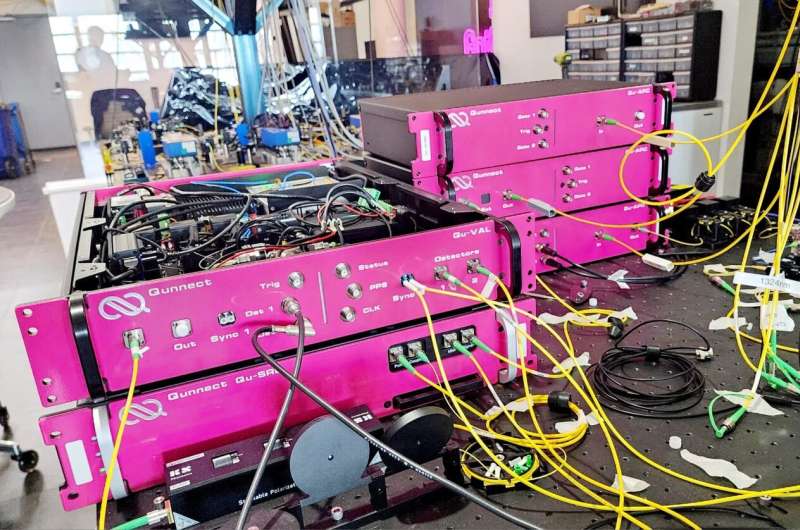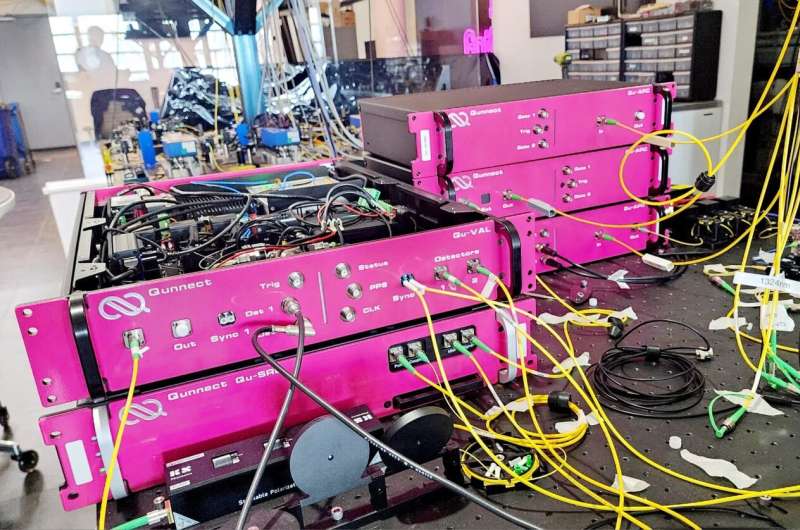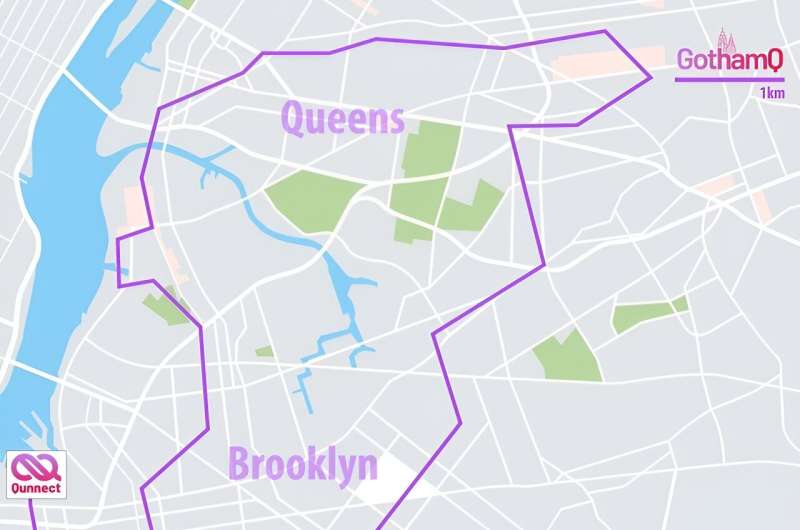Quantum Internet is Real and it's an Underground Network in NYC, USA
 Nicolás Georger
Nicolás Georger

Qunnect Inc., a Brooklyn-based company, has successfully operated a prototype quantum internet network under the streets of New York City for 15 continuous days. This achievement marks a significant step towards the development of a practical and stable quantum internet. The network, called GothamQ, utilizes polarization-entangled photons and features automated polarization compensation (APC) devices to mitigate the effects of fiber environment disturbances. The results, published in PRX Quantum, demonstrate the feasibility of long-term, stable entanglement distribution over metropolitan fiber networks.

Map of the GothamQ network under New York City boroughs. Credit: Physics Magazine via APS
The Challenge of Quantum Networks
The development of quantum networks faces a major hurdle: the fragility of entangled states in fiber cables. Entanglement, a fundamental quantum phenomenon, is essential for secure communication and powerful computation. However, entangled photons are highly susceptible to disturbances caused by vibrations, bending, and temperature fluctuations within fiber cables. These disturbances can lead to rapid degradation of entanglement, making it difficult to maintain stable connections over long distances.
Qunnect's GothamQ Network
Qunnect's GothamQ network tackles this challenge head-on. The network utilizes a leased 34-kilometer-long fiber circuit, operating for 15 continuous days with an uptime of 99.84%. The network transmits polarization-entangled photon pairs at a rate of about 20,000 per second, achieving a compensation fidelity of 99%. This means that the entangled photons remain in their desired state with high accuracy, even after traveling through the fiber network.
Automated Polarization Compensation
To achieve this remarkable stability, Qunnect has developed automated polarization compensation (APC) devices. These devices continuously monitor and correct the polarization of the entangled photons as they travel through the fiber. By sending classical photon pairs with known polarizations, the APCs can measure and compensate for any polarization drift caused by environmental disturbances.
Significance of the GothamQ Demonstration
The GothamQ demonstration is significant for several reasons:
- Long-term stability: The network's 15-day continuous operation with high uptime demonstrates the feasibility of long-term, stable entanglement distribution.
- Automated operation: The use of APCs enables hands-off operation, reducing the need for frequent recalibrations.
- Metropolitan scale: The network's operation over a 34-kilometer metropolitan fiber circuit showcases its potential for real-world applications.
The Future of Quantum Internet
Qunnect's GothamQ network represents a major step towards the realization of a practical and scalable quantum internet. The company's success in overcoming the challenges of entanglement distribution over long distances paves the way for future advancements in quantum communication, computation, and sensing.
Code Example: Simulating Photon Polarization in Python
While we can't quite simulate quantum entanglement with classical code, we can represent photon polarization and its manipulation using Python libraries like NumPy:
import numpy as np
Define a photon as a 2D vector representing its polarization state
photon = np.array([1, 0]) # Horizontally polarized photon
Define a polarization rotation matrix (e.g., for a 45-degree rotation)
rotation_angle = np.radians(45) rotation_matrix = np.array([[np.cos(rotation_angle), -np.sin(rotation_angle)], [np.sin(rotation_angle), np.cos(rotation_angle)]])
Rotate the photon's polarization
rotated_photon = np.dot(rotation_matrix, photon)
print("Original photon polarization:", photon) print("Rotated photon polarization:", rotated_photon)
Output:
Original photon polarization: [1 0]
Rotated photon polarization: [0.70710678 0.70710678]
This code snippet provides a basic illustration of how photon polarization can be represented and manipulated mathematically. In a real-world quantum network, the principles of quantum mechanics govern the behavior of entangled photons, enabling secure communication and other groundbreaking applications.
Links
Subscribe to my newsletter
Read articles from Nicolás Georger directly inside your inbox. Subscribe to the newsletter, and don't miss out.
Written by

Nicolás Georger
Nicolás Georger
Cybernetics, Linux and Kubernetes enthusiast. Site Reliability Engineering/DevOps culture, self educated IT professional, social sciences academic background.